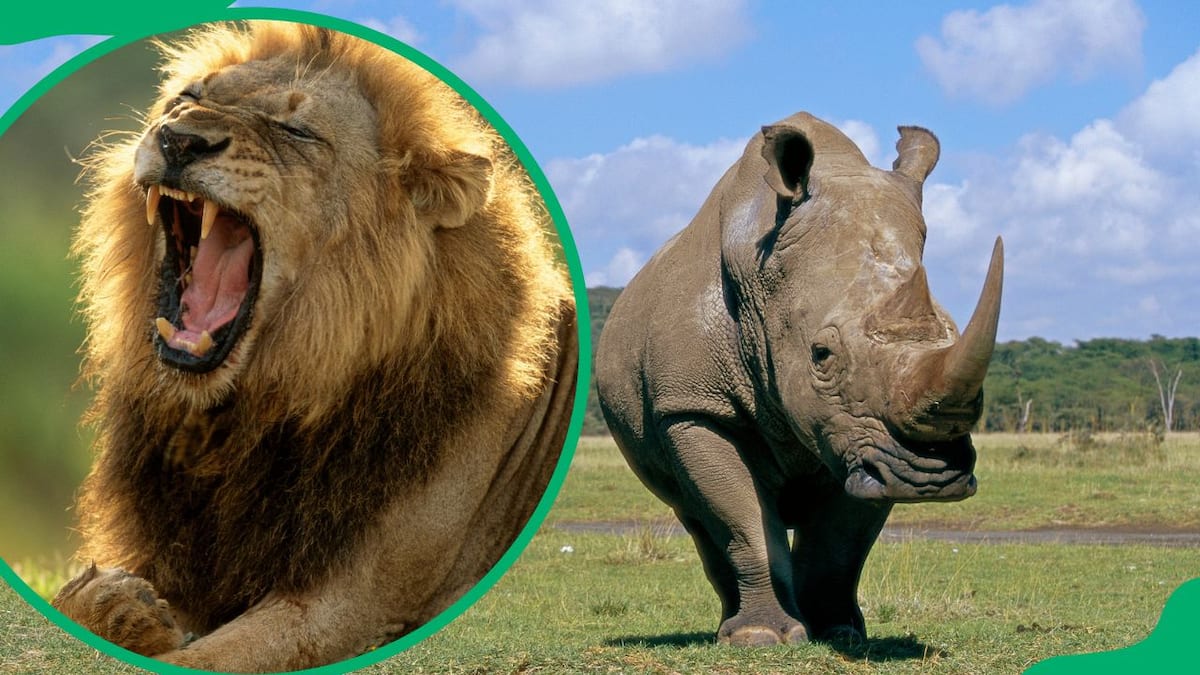
THE BIG 5 ANIMALS: WHAT THEY ARE AND WHERE TO FIND THEM
South Africa is a popular tourist destination thanks to its diverse flora and fauna, breathtaking landscape, melting pot of cultures, and impressive wildlife. The Big Five animals draw tourists in from far and wide thanks to their impressive stature and intimidating demeanour. What are The Big 5 animals?
The Big Five animals in Africa have long captivated nature lovers, with millions travelling from all corners of the globe to catch glimpses of them in various nature reserves across Africa. However, why are these animals so well-loved?
Tours Africa highlighted the vulnerability of each of these animals, with the Cape buffalo being the only one on the 'lease concern' list at the time of the article's publication in 2018. Leopards are considered near threatened, and the lion is listed as vulnerable. The rhino is critically endangered, and the African elephant has been changed from vulnerable to endangered on the IUCN Red List of Threatened Species.
Why are they called the Big 5 animals?
The Big Five animals is the title given to a group of the most challenging animals to find and hunt on foot. Many trophy hunters seek out The Big Five for their notoriety at the 'top of the food chain'. However, many have come to admire and respect the most difficult animals, making them highly sought-after animals to observe during a safari.
The lion and leopard are considered apex predators, as they have no known predators in the wild. The rhino, elephant and buffalo are classed as herbivores and may fall prey to the lion, leopard, or other apex predators in the South African bush.
What is the Big 5 in South Africa?
The Big Five animals in South Africa have brought in tourists from all over the world to observe them in all their glory, with a breathtaking backdrop of the country's natural beauty. What are The Big Five animals that captivate everyone? Here is each of the five animals that make up the heavyweight group:
| Animal | Family |
| Rhinoceros | Rhinocerotidae |
| Lion | Felidae |
| Leopard | Felidae |
| Elephant | Elephantidae |
| Cape buffalo | Bovidae |
5. Rhinoceros
- Domain: Eukaryota
- Kingdom: Animalia
- Phylum: Chordata
- Class: Mammalia
- Order: Perissodactyla
- Superfamily: Rhinocerotoidea
- Family: Rhinocerotidae
- Genus: Rhinoceros
- Tribe: Rhinocerotini
The rhino is as impressive as it is scarce, with the animal listed as critically endangered and around 27,000 left in the wild, as the World Wide Fund for Nature (WWF) reported. Helping Rhinos says an adult male can weigh anything from a reported 1,800 kg to a colossal 2,500 kilogram. Their strong, stocky build and protective horns make them the perfect Big Five specimen.
4. Lion
- Domain: Eukaryota
- Kingdom: Animalia
- Phylum: Chordata
- Class: Mammalia
- Order: Carnivora
- Suborder: Feliformia
- Family: Felidae
- Subfamily: Pantherinae
- Genus: Panthera
- Species: P. leo
Fondly referred to as 'the king of the jungle', the lion is a fierce predator that spends many of its waking moments hunting prey. The average female lion weighs 130 kg, and the average male weighs 190 kg. Although the females hunt, males assist with taking down larger prey such as giraffes and buffalos. Lions work together to stalk and eventually exhaust their prey, making them skilled hunters and an integral part of The Big Five.
3. Leopard
- Domain: Eukaryota
- Kingdom: Animalia
- Phylum: Chordata
- Class: Mammalia
- Order: Carnivora
- Suborder: Feliformia
- Family: Felidae
- Subfamily: Pantherinae
- Genus: Panthera
- Species: P. pardus
The elusive leopard is one of nature's most skilled predators, easily blending into its dense natural surroundings while relaxing or effectively hunting prey. Apart from its useful coat that helps the leopard easily ambush its prey, they have incredible strength and can hunt prey up to five times its own size.
2. Elephant
- Domain: Eukaryota
- Kingdom: Animalia
- Phylum: Chordata
- Class: Mammalia
- Order: Proboscidea
- Superfamily: Elephantoidea
- Family: Elephantidae
The African bush elephant is the largest land animal, and one look at these majestic mammals makes it clear why. The average African elephant weighs around 6.0 tonnes or 6,000 kg. Their massive tusks help for gathering food, lifting objects, and providing defense. However, with the African bush elephant's hefty weight, bringing the magnificent African beast down takes significant effort.
1. Cape buffalo
- Domain: Eukaryota
- Kingdom: Animalia
- Phylum: Chordata
- Class: Mammalia
- Order: Artiodactyla
- Family: Bovidae
- Subfamily: Bovinae
- Tribe: Bovini
- Subtribe: Bubalina
Also known as a 'true buffalo', the cape buffalo has a strong, intimidating demeanour, with the average African adult cape buffalo weighing in at 750 kg. Although considered generally peaceful, these herd animals form an effective, dangerous defence, with males becoming particularly aggressive. With strength in numbers and the added benefit of individual physical strength, cape buffalo are a force to be reckoned with in the wild.
The Big Five animals on money
South Africa showcases its admiration and respect for The Big Five animals through including each of them on the country's currency notes. The rhinoceros is pictured on South Africa's R10 note, the elephant on the R20 note, the lion on the R50 note, the cape buffalo on the R100 note, and the leopard on the R200 note.
What are The Big 5 in Kenya?
The Big Five in Kenya is the same as the Big Five in Tanzania and the rest of Africa, as they do not change depending on the country and are indigenous to most African countries. They are the same as the Big Five in South Africa: the rhinoceros, lion, leopard, elephant, and buffalo.
Where can you find The Big 5?
The Big Five can be spotted at various private nature reserves throughout South Africa and the rest of Africa. However, the Kruger National Park is known for its rich wildlife and is home to all of The Big Five, best seen in the winter months when the flora and fauna are less dense.
The Big 5 animals have long been captivating wildlife lovers and, at times, controversial trophy hunters, with their impressive size, weight, hunting and defence skills firmly placing them in the elite, highly-respected group.
Enjoying a fine dining experience with friends and family make for the ideal bonding time, and visiting a trendy Rosebank restaurant is the ideal place to go. What spots does Briefly.co.za suggest?
We have compiled a list of the best restaurants in Rosebank to satisfy your cravings. The article discusses our top 15 picks.
2024-04-29T06:19:28Z dg43tfdfdgfd
